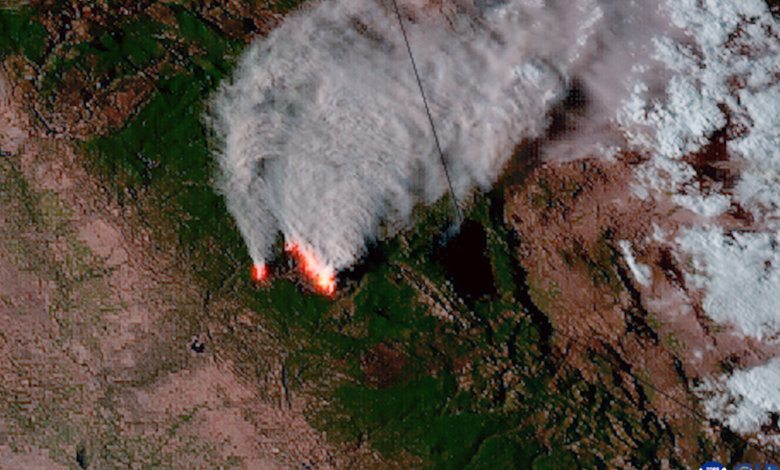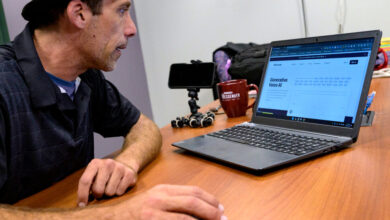Biden-Harris Administration invests $250K to develop powerful artificial intelligence tool to assist wildland firefighting through Investing in America agenda

Today, the Department of Commerce and NOAA announced $250,000 in funding to support the development of a powerful new artificial intelligence (AI) model, which will improve fire weather forecasts through better lightning prediction. This funding is part of a larger Bipartisan Infrastructure Law (BIL) investment to improve fire weather research from President Biden’s Investing in America agenda.
“This investment, made possible thanks to President Biden’s Bipartisan Infrastructure Law, will significantly improve NOAA’s fire weather forecasts while safeguarding firefighters who risk their lives each day to serve Americans impacted by wildland fires,” said U.S. Secretary of Commerce Gina Raimondo.
With the funding, the Center for Satellite Applications and Research, part of NOAA’s National Environmental Satellite, Data, and Information Service (NESDIS), and the University of Wisconsin Cooperative Institute for Meteorological Satellite Studies (CIMSS) are creating a customized version of LightningCast offsite link. This AI model uses imagery and data from the Advanced Baseline Imager and the Geostationary Lightning Mapper — both of which fly on NOAA’s geostationary satellites — to predict lightning strikes in the next hour at any given location, including those around wildland fires. This version of LightningCast includes a new interface, additional machine learning technology and fire-related data to increase its value for decision-making.
NOAA continues to develop products to help first responders stay safe during wildland fires by testing an improved LightningCast tool and related research on early detection of dangerous fire-generated thunderstorms.
“Wildland fires pose a major threat to our nation,” said Assistant Administrator of Commerce for Environmental Observation and Prediction, Michael C. Morgan, Ph.D. “NOAA remains committed to finding ways to use AI, machine learning and other technologies to improve the accuracy of our forecasts and warnings, and better serve first responders as they work to protect lives and property.,”
According to the National Interagency Fire Center, from 2013–2022, there were an average of 61,410 wildland fires annually, with an average of 7.2 million acres burned each year. In 2022 alone, 68,988 wildland fires burned 7.6 million acres.
In addition to the risk of lightning strikes, wildland firefighters also contend with new blazes ignited by lightning strikes. Incident meteorologists (IMETs) at NOAA’s National Weather Service use LightningCast to provide real-time information to wildland fire incident teams, which improves the safety and effectiveness of their wildland fire response.
The wildland fire-focused version of LightningCast began testing in August 2023, within the newly formed NOAA Fire Weather Testbed. Users will continue to explore the tool and provide feedback for this year’s wildland fire season. NOAA plans to transition LightningCast to an operational status in 2025.
“LightningCast is continuing to evolve to meet the demand for timely and actionable information,” said Mike Pavolonis, NESDIS Wildland Fire Program manager. “LightningCast is one of several new satellite-based tools NOAA is developing to address the increasing wildland fire challenge.”
Visit NOAA’s Bipartisan Infrastructure Law website to learn about current and future funding opportunities.
Climate, weather, and water affect all life on our ocean planet. NOAA’s mission is to understand and predict our changing environment, from the deep sea to outer space, and to manage and conserve America’s coastal and marine resources.



